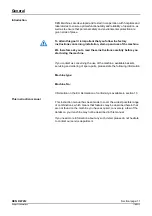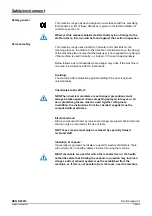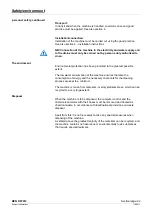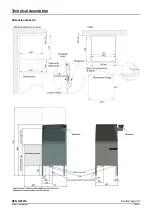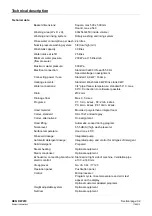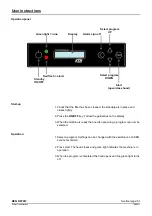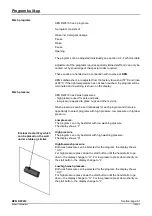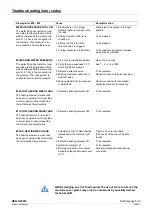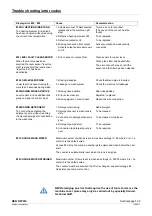
Section/page:7.2
Maintenance
KEN DW 410
Subject to alterations
17/9/2013
General information about stainless steel
Stainless steel is often chosen because of its attractive appearance more
than on the basis of a wish for long service life and low maintenance costs,
while in fact those are the most prominent qualities of this material.
However, all materials including stainless steel, are discoloured after a time
due to dirt, oil, grease, soap or pollution of the water, etc.
Stainless steel - description
Stainless steel is a general designation covering a large group of materials
which share the property of containing minimum 13% chromium (Cr), which
makes them resistant to rust attack. The chromium in the steel reacts with
the oxygen in humid conditions to form a very thin chromium-oxide film that
protects the material against corrosion.
If this film is attacked, either mechanically or chemically, it is reformed
spontaneously if or when the surface gets into contact with oxygen, even in
such low concentrations as exist in normal water.The higher the chromium
content, the better the corrosion resistance of the steel. This good property
is further reinforced with increased molybdenum content (Mo).
At particularly exposed spots, sheets and pipes with a content as high as
2.7% are used. In addition to chromium and molybdenum, nickel content
has been added, primarily to give the steel a structure (austenitic) that
makes the material easy to shape and weld.
Conventional types of stainless steel have a chromium content of approx.
18 % and a nickel content of approx. 8-9% and are called 18/8 steel or
"ordinary stainless".
These types of steel are used primarily for kitchen utensils, the food industry
and other indoor purposes. In particularly aggressive environments, as in a
dishwasher for industrial purposes, it is necessary to use molybdenum alloy
steel at exposed locations to ensure adequate resistance to corrosion.
The occurrence of chlorine, acid, moisture and high temperature are all
parameters that generate an environment that is aggressive to stainless
steel.
That is why KEN A/S uses stainless steel with molybdenum content at
exposed locations in machines subject to particularly harsh environments.
Warning! In this context, we must warn you against using soap with
high chlorine content (higher than 5%) and a low pH value
(lower than 10). Such a composition is highly aggressive to even the
best steel qualities, like the ones we use.
In special cases, the guarantee against corrosion of the steel may be
lost completely.
Discoloration may occur:
1. If the steel is exposed to an environment that is more aggressive than the
steel is intended to handle, i.e. highly polluted air, saline solutions or large
residue or concentration cleaning agents containing chlorides.
2. If the surface is polluted by iron particles from cleaning sponges,
defective baskets or other iron items from which small particles may "drip"
down into the machine.
3. If the machine is connected to extraction ducts that are not corrosion-proof.
4. If the water contains a lot of iron and/or silicates.
5. Another kind of discoloration may also occur as a set-off from copper
piping used in connection with the installation connecting the machine.
Содержание 59.480
Страница 2: ......
Страница 9: ...KEN DW 410 Section page 3 1 Subject to alterations 17 9 2013 Technical description Dimensional sketch ...
Страница 33: ......
Страница 40: ...KEN DW 412 Section page 17 1 Subject to alterations 17 9 2013 Diagrams ...



